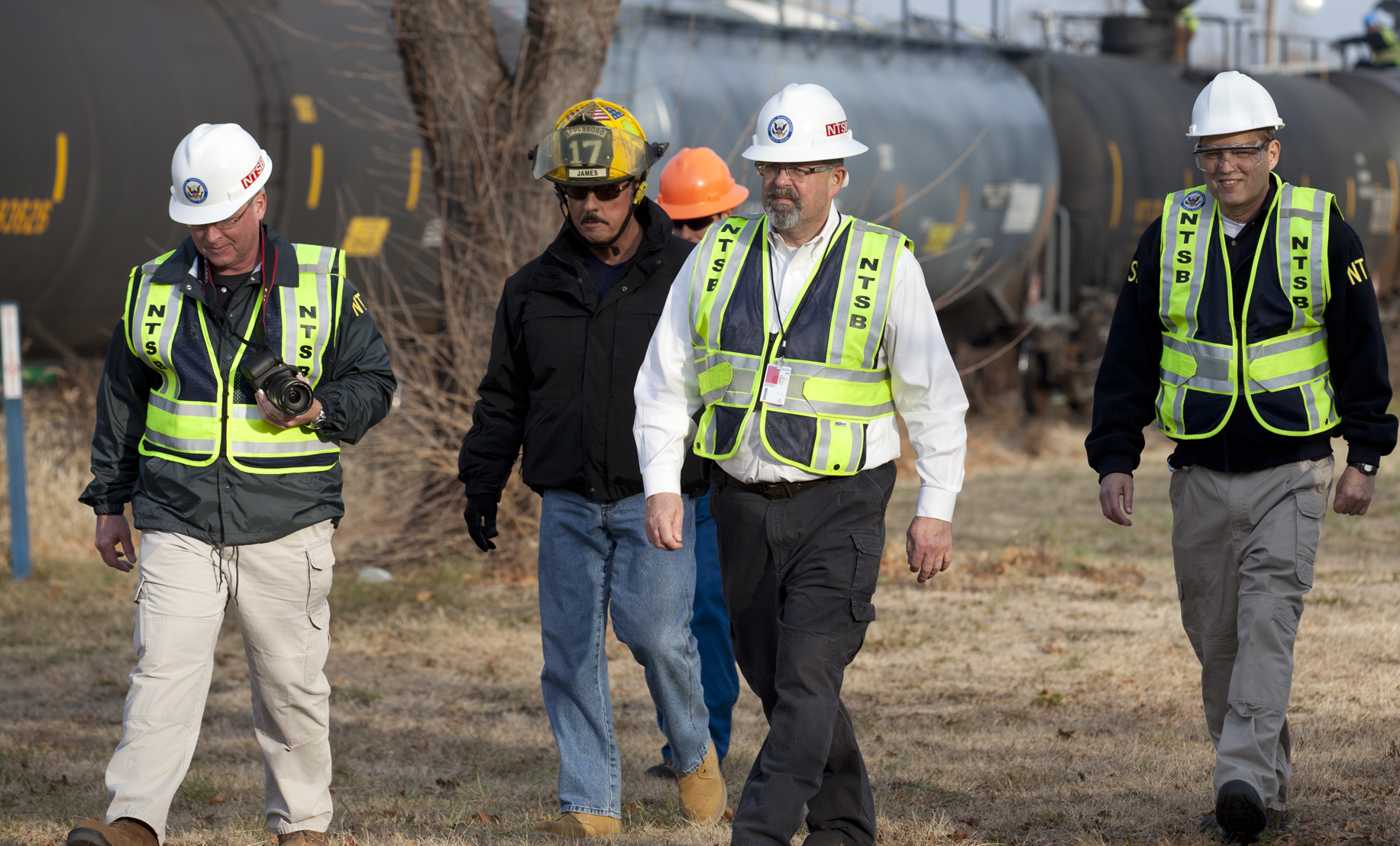
An agency modeled after the federal transportation safety board could promote safety for the public and police.
As the country grapples with the tide of controversial incidents of police use of force, an independent agency like the National Transportation Safety Board (NTSB) would provide a model for how to identify and mitigate systemic factors that result in unwanted violent encounters between police and citizens.
The NTSB is an independent federal agency created in 1974 with the purpose of investigating transportation accidents, with an emphasis on air and rail accidents. Its investigations are forward-looking, focusing on ways to prevent similar accidents from occurring in the future. The NTSB primarily influences safety by issuing recommendations following its investigations. Over the years, its recommendations have spurred widespread adoption of numerous safety-enhancing technologies and policies, including cockpit traffic collision avoidance systems, graduated driver licensing, and positive train control. The NTSB has been praised as a model of how to better manage systemic risk.
Could a new independent agency that is patterned after the NTSB and tasked with investigating police violence help address public concerns about police use of force? Quite possibly. A new agency could adopt features of the NTSB approach that would provide important advantages over the status quo:
Ability to learn from many incidents: Often system-level factors that contribute to unwanted outcomes are only apparent after aggregating across multiple incidents, each of which appear unique and idiosyncratic when viewed in isolation. One of the biggest weaknesses of our current approach to investigating killings of citizens by police is that it is compartmentalized at the local level, meaning that each locality has a limited set of incidents from which to draw useful lessons. In this domain, as in many others where “big data” has grown in popularity, aggregation of information can likely produce better insights.
Separation from the legal process: The current investigative paradigm focuses almost exclusively on whether use of police force was legally justified, which is an adversarial approach that discourages open sharing of information. Moreover, it fails to recognize that many incidents that could be perceived as legally defensible—such as situations in which officers mistakenly believe themselves to be in imminent physical danger—are undesirable from a societal perspective, and in some cases can be prevented. The NTSB process is firewalled from any legal proceedings—which allows investigations to develop a much richer set of data and information that can be used to prevent future problems.
Specialized training: Thoroughly understanding the myriad technological, psychological, and social factors that can contribute to police use of force requires substantial training and expertise that may not be available in many smaller jurisdictions or in District Attorney’s offices. An investigative agency can recruit specialists who can hone their abilities to assess incidents through repeated practice and particularized training.
Better access to outside experts: Through recurrent interactions across many incidents, the NTSB has developed a network of industry and academic experts it can call upon to assist in its investigations, which is an approach known as the Party System. While the Party System is not without critics due to its potential for conflicts of interest, it substantially increases the agency’s analytical capability without requiring additional personnel. A new agency could develop ongoing relationships with outside psychologists, medical examiners, forensic video analysts, and ballistics experts to bolster its capabilities.
Transparency in investigative processes: Many recent investigations of police use of force have been criticized due to lack of transparency about why certain actions—such as convening a grand jury or releasing a video to the public—were taken. Other critics point to departures from a jurisdiction’s established processes for other cases as evidence that investigations are biased. Such procedural problems seem nearly unavoidable when a District Attorney is making procedural decisions in real time while investigating an incident that differs in important ways from more routine investigative business. An agency could remedy this problem by developing a set of protocols governing its investigations and making these freely available to stakeholders and the public. The NTSB has followed this pattern, which has ultimately strengthened its legitimacy.
Even though these potential advantages are significant, creating an independent agency modeled after the NTSB would not be without obstacles. Some citizens and policymakers would likely reflexively resist an apparent expansion of federal personnel or authority, and others may distrust a bureaucracy that has thus far largely ineffectually addressed the problem of killings of citizens by police.
Moreover, enabling legislation would need to consider the scope of incidents that would be subject to the purview of the new agency, which is a thornier issue for policing than it is for transportation, since there are some situations in which the only recourse to protect officers or the public from further harm is through violent police action that may not represent a system error.
While such obstacles are real, the potential benefits of better assessment of the causes of and remedies for killings of citizens by police are substantial. Airline fatalities have appreciably declined and railroad deaths have decreased by about half since the 1970s. While a variety of factors have contributed to these impressive improvements in the transportation realm, the NTSB certainly deserves credit for identifying productive system-level safety investments and promoting a culture of safety in these industries. It is time to consider whether a similar agency could do the same for law enforcement professionals and the citizens they serve.
This essay is part of a fifteen-part series, Regulating Police Use of Force.




